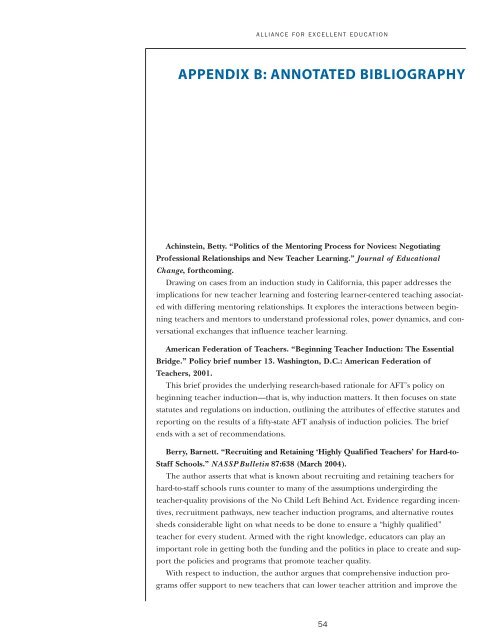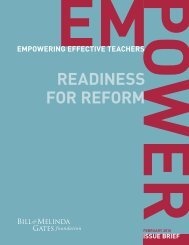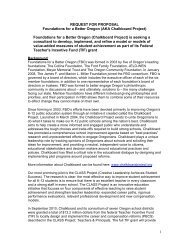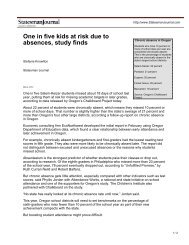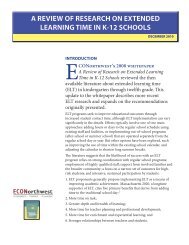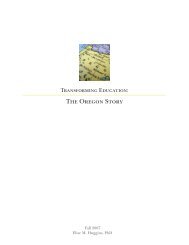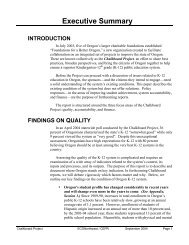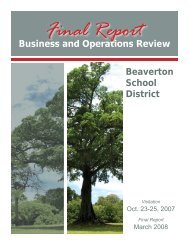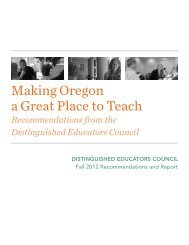Tapping the Potential - Alliance for Excellent Education
Tapping the Potential - Alliance for Excellent Education
Tapping the Potential - Alliance for Excellent Education
You also want an ePaper? Increase the reach of your titles
YUMPU automatically turns print PDFs into web optimized ePapers that Google loves.
A L L I A N C E F O R E X C E L L E N T E D U C AT I O NAPPENDIX B: ANNOTATED BIBLIOGRAPHYAchinstein, Betty. “Politics of <strong>the</strong> Mentoring Process <strong>for</strong> Novices: NegotiatingProfessional Relationships and New Teacher Learning.” Journal of <strong>Education</strong>alChange, <strong>for</strong>thcoming.Drawing on cases from an induction study in Cali<strong>for</strong>nia, this paper addresses <strong>the</strong>implications <strong>for</strong> new teacher learning and fostering learner-centered teaching associatedwith differing mentoring relationships. It explores <strong>the</strong> interactions between beginningteachers and mentors to understand professional roles, power dynamics, and conversationalexchanges that influence teacher learning.American Federation of Teachers. “Beginning Teacher Induction: The EssentialBridge.” Policy brief number 13. Washington, D.C.: American Federation ofTeachers, 2001.This brief provides <strong>the</strong> underlying research-based rationale <strong>for</strong> AFT’s policy onbeginning teacher induction—that is, why induction matters. It <strong>the</strong>n focuses on statestatutes and regulations on induction, outlining <strong>the</strong> attributes of effective statutes andreporting on <strong>the</strong> results of a fifty-state AFT analysis of induction policies. The briefends with a set of recommendations.Berry, Barnett. “Recruiting and Retaining ‘Highly Qualified Teachers’ <strong>for</strong> Hard-to-Staff Schools.” NASSPBulletin 87:638 (March 2004).The author asserts that what is known about recruiting and retaining teachers <strong>for</strong>hard-to-staff schools runs counter to many of <strong>the</strong> assumptions undergirding <strong>the</strong>teacher-quality provisions of <strong>the</strong> No Child Left Behind Act. Evidence regarding incentives,recruitment pathways, new teacher induction programs, and alternative routessheds considerable light on what needs to be done to ensure a “highly qualified”teacher <strong>for</strong> every student. Armed with <strong>the</strong> right knowledge, educators can play animportant role in getting both <strong>the</strong> funding and <strong>the</strong> politics in place to create and support<strong>the</strong> policies and programs that promote teacher quality.With respect to induction, <strong>the</strong> author argues that comprehensive induction programsoffer support to new teachers that can lower teacher attrition and improve <strong>the</strong>54


